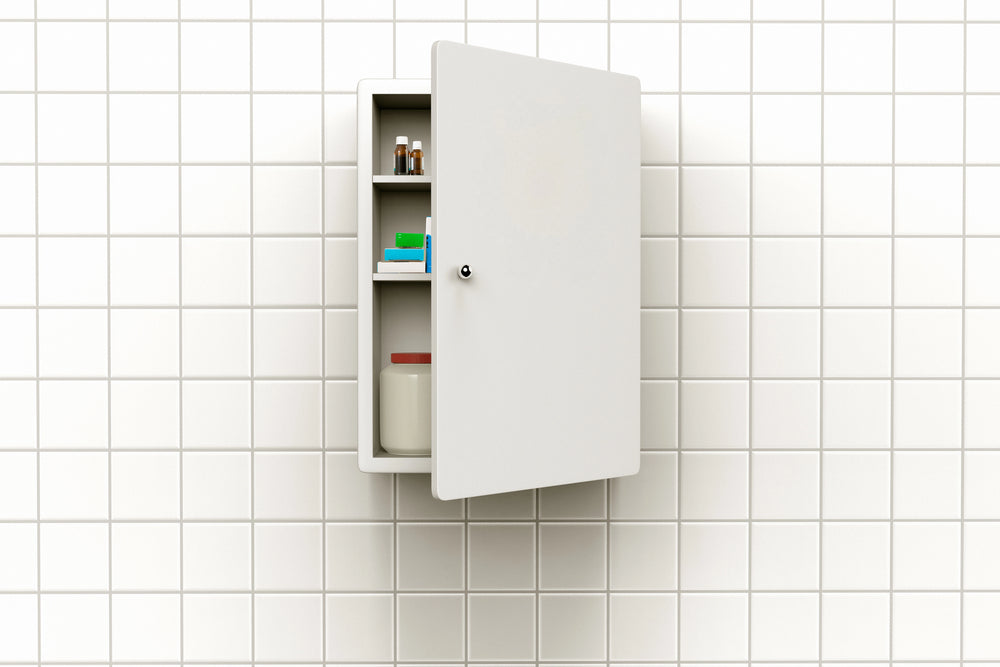
How To Install Medicine Cabinets With Precision And Care

Medicine cabinets are more than functional storage solutions; they enhance the style and practicality of your bathroom. Knowing how to install medicine cabinets correctly ensures they become a seamless part of your space. From recessed cabinets that fit flush into walls to surface-mounted designs that attach to studs, each installation requires careful planning. This guide will walk you through the installation process, helping you achieve a polished look that adds utility and sophistication to your bathroom.
Types of Medicine Cabinets
Before diving into installation, it is helpful to understand the two main types of medicine cabinets: recessed and surface-mounted.
- Recessed Medicine Cabinets: These are installed inside the wall, creating a sleek, built-in look. They often feature deeper shelves and minimal protrusion, making them ideal for small spaces. However, their installation involves cutting into drywall and may require adjustments to existing plumbing or wiring.
- Surface-Mounted Medicine Cabinets: These attach directly to the wall studs without disturbing the drywall, requiring less labor-intensive installation. They are a practical option for walls with obstructions such as pipes or electrical lines. Surface-mounted cabinets are slightly more prominent, but they are easier to install without professional assistance.
Preparing for Installation
Proper preparation is key to installing a medicine cabinet successfully. Begin by gathering the necessary tools and reviewing the installation manual provided with your cabinet. Common tools include a stud finder, measuring tape, level, drill, screwdriver, and drywall saw if you’re installing a recessed cabinet. You may also need wood for blocking if you are installing a recessed cabinet.
Plan the cabinet’s placement carefully. The bottom of the medicine cabinet is typically installed about 48 inches above the finished floor (AFF) or approximately 12 inches above the vanity top. Adjust the height based on your specific needs while assuring the cabinet clears any faucets, light fixtures, or soap dispensers and remains easy to access.
Step-By-Step Guide to Installing a Recessed Medicine Cabinet
Step 1: Inspect the Wall Cavity
Use a stud finder to locate studs in the area where you plan to install the cabinet. Mark the studs lightly with a pencil. Check for electrical wires or plumbing behind the wall using a keyhole saw to cut small inspection holes. If obstructions are present, consult a professional to reroute them.
Step 2: Mark and Cut the Opening
Measure and outline the cabinet’s dimensions on the wall. Use a level to ensure the outline is straight and even. Carefully cut along the outline with a keyhole saw, removing drywall and any insulation inside the cavity.
Step 3: Add Blocking for Support
Cut horizontal 2x4s (actual dimensions: 1.5” x 3.5”) to fit between the wall studs at the top and bottom of the cavity. Attach these pieces securely using construction adhesive and screws. This framing provides structural support for the cabinet.
Step 4: Fit and Secure the Cabinet
Insert the medicine cabinet into the opening to test the fit. Adjust as needed with a rasp or utility knife. Once it fits snugly, screw the cabinet into the blocking. Check that the cabinet is level and plumb before securing it fully.
Step 5: Final Touches
Reattach the door, install shelves, and caulk around the edges if there are small gaps. Repaint any patched drywall to match the surrounding wall.
Step-By-Step Guide to Installing a Surface-Mounted Medicine Cabinet
Step 1: Locate Wall Studs
Use a stud finder to mark the studs where you plan to mount the cabinet. If the cabinet’s pre-drilled mounting strips do not align with the studs, you may need to use anchors or toggle bolts for additional support.
Step 2: Mark the Mounting Holes
To ensure accurate placement, carefully measure and calculate the locations for the mounting holes before drilling. Start by measuring the desired height for the cabinet, ensuring that the bottom of the cabinet is positioned 48 inches above the finished floor (AFF) or 12 inches above the vanity top, whichever is higher (this is especially important with modern vanity tops that may be more than 36" AFF).
Once the hole locations are measured and marked, double-check your measurements with a level to ensure the cabinet will be aligned properly. This method will provide a more precise, secure installation compared to marking the wall while holding the cabinet in place.
Step 3: Drill Pilot Holes
Drill pilot holes at the marked locations. If you are using drywall anchors or toggle bolts, insert them into the pilot holes before proceeding.
Step 4: Mount the Cabinet
Before securing the cabinet, check that it is level at each step—when spotting and drilling the holes, and again after aligning it with the pilot holes or anchors. Once the cabinet is properly aligned and level, secure it to the wall using screws or anchor screws.
Double-check the level one final time before fully tightening the screws to ensure the cabinet remains perfectly aligned throughout the installation process.
Step 5: Assemble the Interior
Before starting the installation, always remove the door if it’s not already detached. This ensures easier handling and avoids potential damage during the process.
Once the cabinet is securely mounted, install the shelves and any additional hardware. If you removed the door during installation, reattach it once everything is in place.
Finally, test the cabinet’s stability and make any necessary adjustments to ensure everything is secure and properly aligned.
Tips for a Successful Medicine Cabinet Installation
- Measure Twice, Cut Once: Double-check all measurements to avoid unnecessary mistakes when cutting drywall or drilling holes.
- Account for Door Clearance: Ensure the cabinet door can open fully without hitting nearby fixtures or walls.
- Use Proper Anchors: For surface-mounted cabinets, if the studs line up with the mounting holes or brackets, it's best to screw directly into the studs for maximum support. If the studs don't align, choose anchors that are rated to hold the cabinet’s weight. Using the right anchors or screws ensures the cabinet is securely mounted and can support its intended load.
Why Perfect Makeup Mirrors Is Your Best Source
Perfect Makeup Mirrors offers a thoughtfully curated selection of recessed and surface-mounted medicine cabinets to suit your bathroom style. Our collection combines premium materials with innovative features, ensuring a blend of functionality and elegance.
With world-class customer service and expert knowledge, we make finding the perfect cabinet for your space seamless.


